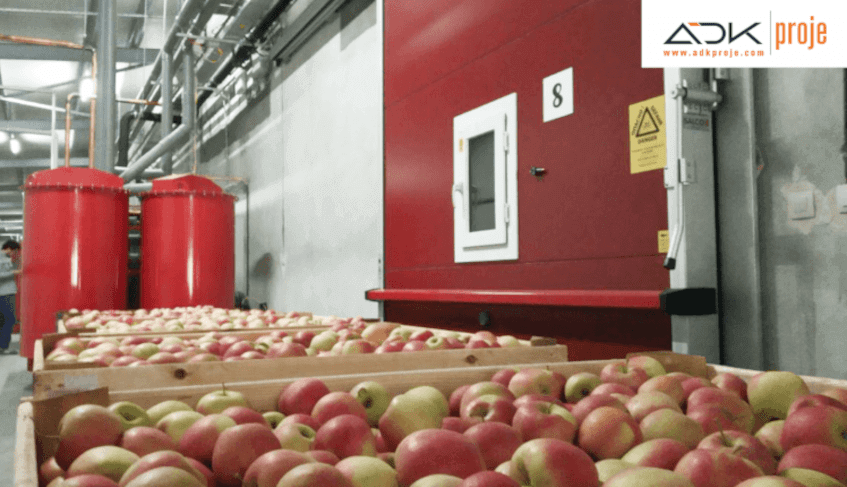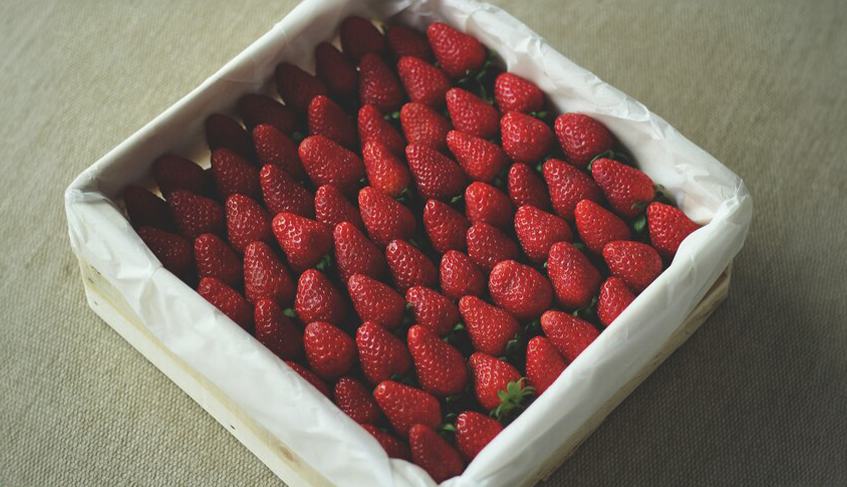Controlled Atmosphere System (KA)
Vegetables and fruits breathe (“respiration”); They take in oxygen (O2) and give off carbon dioxide (CO2). By storing vegetables and fruits in a gas-tight area, the oxygen level in the air is reduced and the CO2 level increases. Basically, long-term storage of fruits and vegetables can be reduced to inhibiting ripening and aging in order to preserve taste and quality. Essentially, maturation is delayed. This is achieved by complying with the gas conditions in the cold stores, so that the respiration of the fruit and vegetable is significantly retarded.
Controlled Atmosphere (CA) is a storage technique in which the oxygen level is lowered and the CO2 generally increased. The quality and freshness of vegetables and fruits are preserved under Controlled Atmosphere conditions without the use of chemicals. Many products can be stored for 2 to 4 times longer under CA conditions.
Dynamic KA Storage System
The dynamic KA system adapts dynamically to KA conditions during storage (instead of pre-fixed setting). The “Dynamic KA Storage System” device reacts according to the physiological state of the fruit in the warehouse and automatically adapts to the storage conditions there. Oxygen percentages less than 1% are not a problem in this case, since the oxygen concentration is adjusted directly without falling to too low values.
Why Dynamic KA Storage?
Determining the optimal, lowest oxygen concentration in fruit storage is a challenge; it depends on different factors:
- Fruit type
- Harvest time (maturity)
- Sealed cold storage
- Season/climate
- Habitat (microclimate and geography)
All these factors are effective in how active the fruit is (in terms of respiratory activity of the fruit). So determining the optimal oxygen concentration is quite a tricky business. Generally the prevailing rule is; The lower the oxygen concentration, the longer the fruit can be stored. However, there is a lower limit for oxygen concentration, at this limit fermentation (fermentation) begins, which directly affects fruit quality (and thus storage). As a result, storage at a "safe" O2 concentration is usually chosen, which is usually slightly higher than 1%. With dynamic KA storage, the fruit is automatically stored in the most suitable condition, the storage is adjusted as a reaction to the continuous breathing of the fruit. Oxygen percentages less than 1% are not a problem in this case, since the oxygen concentration is adjusted directly without falling to too low values. So it is the maximum storage method!
Storage Of Fruits On Pallets
Each type of fruit requires specific O2 - and CO2 - concentrations for optimal storage. This demands a lot from your air conditioning system. Naturally, when you separate some of the pallets, you do not want the conditions on the pallets to be interrupted. Storage on pallets means you can distribute some of the stock without interrupting the storage conditions of other units. Thus, the production loss is minimized, the market can be moved more easily and your profit is maximized.
- Benefits storage on pallets;
- Setting gas conditions on the pallet
- No traces of mold and aromatic changes
- No Co2 or O2 exchange when connecting and disconnecting units
The system unit consists of a cover and a special plastic pallet on which the products in the form of boxes or boxes are placed. A gas-tight and transparent cover of 1.0 m (l) x 1.2 m (b), at a maximum height of 5 meters, is placed on the pallet, so up to 1 ton of fruit can be stored depending on the product. The system measures the gas conditions in the blanket at least once a day and regulates CO2, N2 and air if necessary. CO2 is supplied from gas cylinders, O2-scavenger which generates nitrogen from N2 (outside) air.
Comfortable and Modular
The traditional central system is a modular established type. It serves minimum 10, maximum 400 units. Expansion of the system is very simple. The basic case is equipped with 4 measuring loops that can serve every 100 covers.









